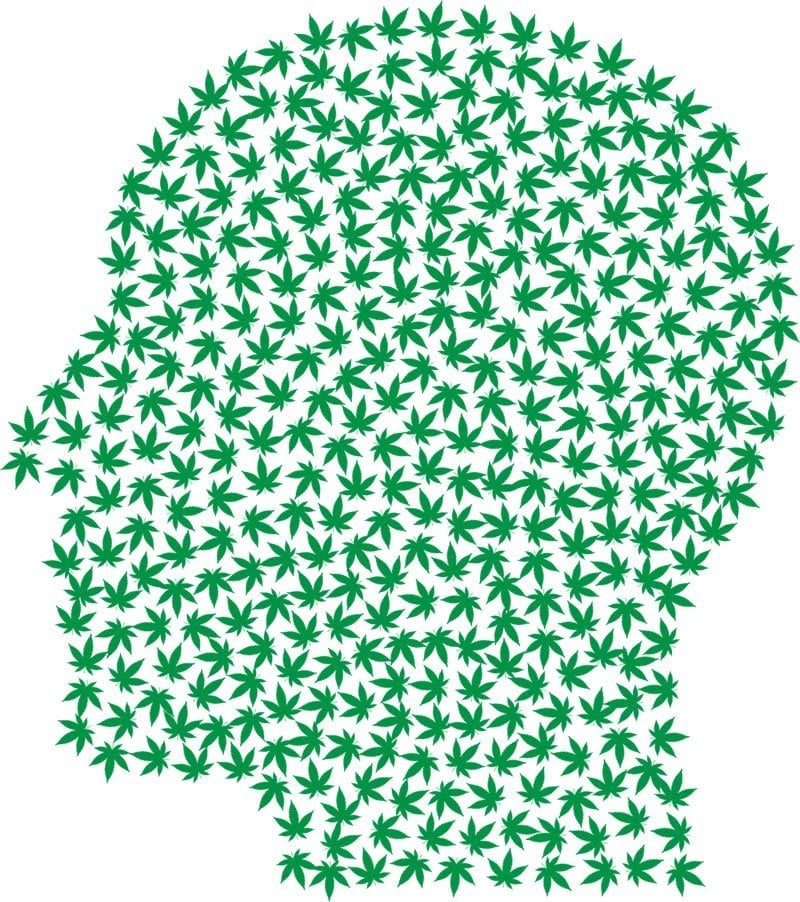Summary: A naturally occurring molecule produced by the brain activates endocannabinoid receptors, protecting against stress by reducing anxiety-producing connections between the amygdala and the prefrontal cortex. The findings may help explain why people turn to marijuana when they feel anxious or stressed.
Source: Vanderbilt University
A molecule produced by the brain that activates the same receptors as marijuana is protective against stress by reducing anxiety-causing connections between two brain regions, Vanderbilt University Medical Center researchers report.
This finding, published today in Neuron, could help explain why some people use marijuana when they’re anxious or under stress. It could also mean that pharmacologic treatments that increase levels of this molecule, known as “2-AG,” in the brain could regulate anxiety and depressive symptoms in people with stress-related anxiety disorders, potentially avoiding a reliance on medical marijuana or similar treatments.
When mice are exposed to acute stress, a break in an anxiety-producing connection between the amygdala and the frontal cortex caused by 2-AG temporarily disappears, causing the emergence of anxiety-related behaviors.
“The circuit between the amygdala and the frontal cortex has been shown to be stronger in individuals with certain types of anxiety disorders. As people or animals are exposed to stress and get more anxious, these two brain areas glue together, and their activity grows stronger together,” said Sachin Patel, MD, PhD, the paper’s corresponding author and director of the Division of General Psychiatry at Vanderbilt University Medical Center.
“We might predict there’s a collapse in the endocannabinoid system, which includes 2-AG, in the patients that go on to develop a disorder. But, not everyone develops a psychiatric disorder after trauma exposure, so maybe the people who don’t develop a disorder are able to maintain that system in some way. Those are the things we’re interested in testing next.”

The study also found that signaling between the amygdala and the frontal cortex can be strengthened through genetic manipulations that compromise endogenous cannabinoid signaling in this pathway, causing mice to become anxious even without exposure to stress in some cases. This finding demonstrates that the cannabinoid signaling system that suppresses information flow between these two brain regions is critical for setting the level of anxiety in animals.
“We don’t know how or why this cannabinoid signaling system disappears or disintegrates in response to stress, but it results in the strengthening of the connection between these two regions and heightened anxiety behaviors in mice. Understanding what’s causing that compromise, what causes the signaling system to return after a few days, and many other questions about the molecular mechanisms by which this is happening are things we’re interested in following up on,” said Patel, also the James G. Blakemore Professor of Psychiatry and Behavioral Sciences, Molecular Physiology and Biophysics and Pharmacology.
David Marcus, Neuroscience graduate student and first author on the paper, and Patel are also interested in how the system reacts to more chronic forms of stress and determining whether there are other environmental exposures that compromise or enhance this system to regulate behavior.
Funding: This research was supported by the National Institute of Mental Health (grant MH107435).
Source:
Vanderbilt University
Media Contacts:
Craig Boerner – Vanderbilt University
Image Source:
The image is in the public domain.
Original Research: Closed access
“Endocannabinoid Signaling Collapse Mediates Stress-Induced Amygdalo-Cortical Strengthening”. Sachin Patel et al.
Neuron doi:10.1016/j.neuron.2019.12.024.
Abstract
Endocannabinoid Signaling Collapse Mediates Stress-Induced Amygdalo-Cortical Strengthening
Highlights
• The BLA-plPFC circuit is engaged by stress exposure and its activation is anxiogenic
• Stress enhances glutamate release in a reciprocal BLA-plPFC-BLA subcircuit
• BLA-plPFC glutamatergic drive is constrained by multimodal 2-AG signaling
• 2-AG signaling collapse mediates stress-induced circuit strengthening and anxiety
Summary
Functional coupling between the amygdala and the dorsomedial prefrontal cortex (dmPFC) has been implicated in the generation of negative affective states; however, the mechanisms by which stress increases amygdala-dmPFC synaptic strength and generates anxiety-like behaviors are not well understood. Here, we show that the mouse basolateral amygdala (BLA)-prelimbic prefrontal cortex (plPFC) circuit is engaged by stress and activation of this pathway in anxiogenic. Furthermore, we demonstrate that acute stress exposure leads to a lasting increase in synaptic strength within a reciprocal BLA-plPFC-BLA subcircuit. Importantly, we identify 2-arachidonoylglycerol (2-AG)-mediated endocannabinoid signaling as a key mechanism limiting glutamate release at BLA-plPFC synapses and the functional collapse of multimodal 2-AG signaling as a molecular mechanism leading to persistent circuit-specific synaptic strengthening and anxiety-like behaviors after stress exposure. These data suggest that circuit-specific impairment in 2-AG signaling could facilitate functional coupling between the BLA and plPFC and the translation of environmental stress to affective pathology.






